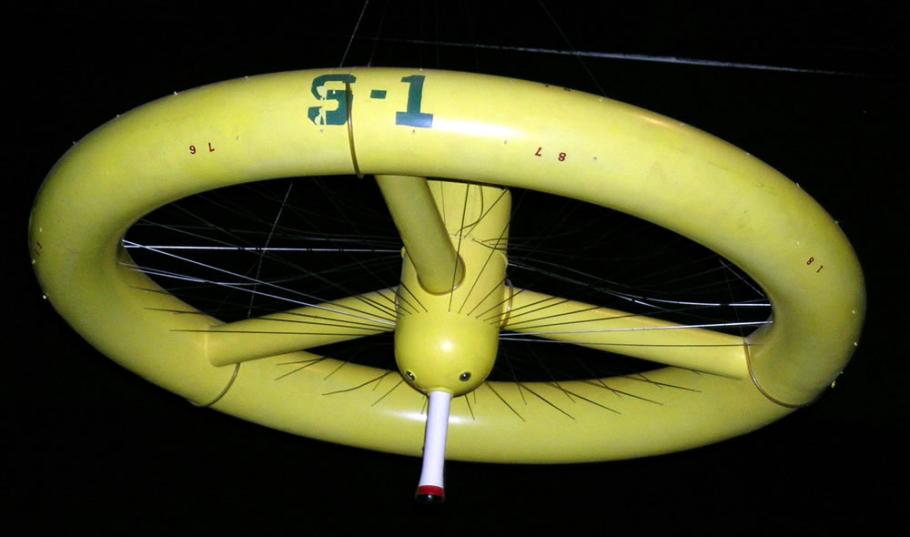In a previous blog post, I discussed the influence that Wernher von Braun had on the vision of the way that human space travel would progress, from brief flights into space to long duration missions to Mars. To continue that discussion: Wernher von Braun envisioned the space station to be something quite different from the International Space Station that is now in orbit: he imagined a wheel-shaped vessel that rotated to provide artificial gravity for its crew. It would serve as a refueling station, assembly station, and general “base camp” for deep space missions. Von Braun envisioned its crew playing a critical military role, conducting reconnaissance and even delivering nuclear weapons to targets below. Events proceeded along a different trajectory. In the heat of the Apollo program, NASA found that it could achieve a landing on the Moon faster and with fewer (only one) rocket launches, if the rendezvous and docking took place in orbit around the Moon, not Earth. That undercut the reason for having a space station as a base camp. Current plans for deep space exploration call for an Earth orbit docking, in which a small, crewed vehicle will dock with a heavier, uncrewed vehicle that will contain hardware for a deep space voyage. But this configuration involves little or no construction in Earth orbit, and would not require a human crew to assemble a Moon or Mars ship.
Likewise, as the U.S. military developed intercontinental ballistic missiles, reconnaissance satellites, signals-intelligence satellites, and other unmanned systems, the notion of a space station as a military base faded as well. Indeed, although historians have emphasized the connection between science fiction and the evolution of the U.S. space programs, the lack of Buck Rogers/Star Wars shoot-outs in space, so common in science fiction, is conspicuous by its absence in reality. This is a glaring example of a disconnect between depictions of space travel in science fiction and what has really happened. The closest the United States ever came to that was the highly-classified Manned Orbiting Laboratory (MOL) program, in which an Air Force crew would occupy a modest station, based on Gemini hardware, in low Earth orbit. As automated reconnaissance and other military satellites improved through the 1960s, MOL was cancelled in 1969, before any hardware had been orbited. The concept of rotating the station to achieve artificial gravity was never adopted, either, although people who spend extended periods of time in space do suffer from the effects of weightlessness. A rotating station adds mechanical complexity, weight, and cost. One reason for having a space station is to enjoy a micro-gravity environment for research; thus a rotating station would also need a non-rotating component, further adding weight and complicating the design. As astronauts gained experience in longer duration flights in the mid-1960s, NASA concluded that this requirement could be relaxed, if compensated by training, conditioning, and other procedures for those living for an extended period in weightlessness.
Over and above these modifications to the von Braun paradigm is the notion that one need not send humans to Mars at all, but rather explore the red planet with robots. This was never part of von Braun’s vision, yet robotic exploration of Mars and the outer Solar System has been part of NASA’s accomplishments in the past two decades. Those accomplishments are due in part to what is commonly known as “Moore’s Law,” the overall exponential increase in computing power since 1960. But one must be more precise about the nature of advances in computing as they apply to the substitution of robots for humans in space. We see this issue in current debates over NASA’s plan for future human-tended missions. In spite of the accomplishments of robotic craft, NASA leadership feels that these robots are no substitute for human beings. With all of the criticism of NASA in recent years, public support for sending humans into space remains high. To resolve this issue in favor of the robots, computers need not just get more and more capable—they are already doing that nicely—they also must attain a high level of artificial intelligence (AI), which will endow them with a consciousness that matches the consciousness of human astronauts. Human beings will long to personally travel through deep space, regardless of the obstacles. That may not be practical, but perhaps one can provide a fully equivalent experience by downloading one’s consciousness onto a computer. Is that possible? Given the pace of computer technology, we ought to know in a few years. If Moore’s Law continues to hold up, we will have computers with a density equivalent to that of the human brain by about 2030. Even if such “virtual travelers” prove impractical, robotic explorations will continue. The coming decades ought to be among the most exciting in space exploration.


